Part 3: Getting Chilly in Chile
The Apology (Courtesy of Andy)
Contrary to Sarah’s previous statement, and my belief, that I would be able to get away with doing next to nothing towards this blog and still be able to claim that I had “creative input” as “mostly editor”…. There sadly has had to be a change in structure within the team and even more sadly this has largely been down to me not taking the title of “mostly editor” as seriously as I should have.
Our current location in the blog is Puerto Montt in Chile. Now the more astute amongst you will realise that although we thoroughly enjoyed Chile that we have not, infact, become stuck in suspended animation for the past three months and in reality much time has passed and many events have happened. We have merely failed to divulge these aforementioned events. As I said earlier this is largely due to Sarah’s “Apathy”….. and partially due to my failure to drive results (or equally as feasible it may be due to both of us being too busy chasing self indulgence).
Anyhow, regardless of blame… Sarah, we are now resolved to bring the blog up to date before our return to the UK on the 20th of June. Entonces (translation-“and hence” or “then”) be prepared for a smattering (I was going to say “flurry”, but in my old age have realised it’s best not to over promise) of activity over the coming months which hopefully will entertain, but more importantly will give you a feel for this continent that has frustrated, enchanted, bewildered and enthralled us…..
And now that I’ve put my thesaurus away I will be kicking off our recovery plan and picking up from where Sarah left off in Puerto Montt.
An aside
Given my previous position in the production team structure of this blog there have been several omissions from the story to date, often largely insignificant, but occasionally of note. I am going to take this opportunity to rectify this prior to continuing on our Journey South in to the colder climates of Latin America.
The first thing I would like to note is that for any couple to spend 24/7 together for a sustained period of time will always unveil certain character traits.
For me I think Sarah has been witness to (apologies in advance) an inherited character trait, one that some may recognise from the Y chromosome part of my parental unit… My dad’s inability to contain himself from standing on his principles, but not necessarily in the most controlled manner. When this occurs in English it largely involves raised voices and incoherent babble whilst my rage restricts me from making the point I want to make. When this occurs in Spanish it is a wholly more comical affair where I take on the persona of an Italian racing car driver. However the combination of my broken Spanish and large Giovanni-esque gesticulations oddly seem to be more effective than my English methods… maybe it’s my inability to swear in Spanish that is aiding my cause.
Further to inherited character traits I have also found some new character traits of Sarah’s which evidently also come from the “Y” chromosome of her parental unit. Otherwise known as the “Yorkshire” chromosome. Sarah has inherited some truly innovative ways of looking after the pennies. These methods vary from taking all those small soap pieces you find in random bathrooms and compressing them into a single block that looks a little bit like a five year olds Playdough pot (lumpy, dry and very colourful) to her nightly ritual of cutting that toothpaste tube (that most people would have thrown away) ever so slightly shorter to scrape the residual toothpaste from the inside (coincidentally this is also the approach she takes to suntan cream).
The second thing I’ve spotted probably isn’t an inherited character trait. As far as I’m aware Sarah’s parents have never had any problems with gaining access to their own house, living room, bedroom, bathroom….. infact just general access to and from buildings. Alas, it is a sad fact that Sarah cannot open doors. I’m not saying every door, but probably 60% of doors, anything that is more complex than a push door (and she’s even had a problem with one of those). Sarah does insist that this is a recent development, but I’m wondering whether this is a frequent occurrence at home that I may have overlooked (any feedback is welcome).
There probably is more of note, but it’s probably about time to get on with our travels.
Part 3: Getting Chilly in Chile
We awoke the morning of our flight to Punta Arenas with the comfortable lethargy that you only feel the morning after eating a big steak and drinking plenty of beer. This was our first moment of true splashing out during the trip and had set us up nicely for a hard day of travelling.
The taxi arrived with Germanic punctuality to take us to the airport. (Contrary to what many people had pre-warned us about Chilean modes of transport they have largely been reliable with most, if not all, of our experiences being positive ones. If you do travel by bus there are better companies such as Tur bus, but by and large they are all of a very good quality)
After having a very smooth ride to the airport we joined the conveyor belt of European travellers who descend on Patagonia each year, all sporting the latest in outdoor paraphernalia strapped to the outside of their rucksacks. At this point we became distinctly aware of some short-comings in our apparel, namely:
1) Our 5 degrees celsius plus sleeping bags (that took up half our rucksacks)
2) My lack of any long sleeve t-shirt
3) The reliance on our ability to read the stars to take a compass reference should we get lost in the mountains
4) Something that we didn’t fully appreciate the benefit of at the time, but saw a number of variations on a theme that we could see strapped to the outside of backpacks in the airport…..walking sticks
Having identified areas of weakness in our equipment we decided on our arrival to Puerto Natales (the gateway to Torres Del Paine national park, which was the purpose of our trek down south) that we would take some measures to correct/improve our situation.
The flight passed without incident and we arrived into Punta Arenas, determined to get the earliest possible bus to Puerto Natales. To avoid the rush of passengers trying to do the same, Sarah left me to collect the luggage whilst she organised a taxi to take us into the centre of town and the station where the next bus would be departing. Sarah did a sterling job and within 10 minutes we were in a taxi making the 20 minute journey to the centre. During this taxi journey we learnt several things:
1) Taxis are really cheap in South America
2) You can see Tierra Del Fuego (and hence Argentina) from Chile over the Fjord from Punta Arenas
3) That the countries that have influenced Chilean populace stretch further than you might expect. We´d come across German influence, Portuguese influence, English Influence and Spanish Influence and then we met our Taxi driver…. Armando Davies, descendant of one of the few Welsh families to colonise an area of the south of Chile. Armando had had a very interesting life moving between Argentina and Chile, before settling in Punta Arenas with his family. (He was the first and the last Davies we met in Chile, but he assured us he was not the only one and, like most Welshmen, could not speak a word of Welsh).
On arriving in Punta Arenas we discovered that the standard is to spend a couple of days there before heading to Puerto Natales and hence all of the busses until eight in the evening were full. Fortunately one of the more entrepreneurial bus companies spotted the peak in demand and offered to put on an unscheduled bus, which they filled within 2 hours.
We bought tickets and then decided, given we would be arriving a little later into Puerto Natales, we would try to resolve our equipment issues in Punta Arenas and spent the next 30 minutes trying to find an open outdoors shop (Unfortunately we had arrived in Punta Arenas between 12:00 and 15:00 where it seems the whole town shuts down for siesta). Fortunately for us there are still some key brands that operate the standard US/English working hours. The shop that was open was North Face, which although very expensive was able to point us in the direction of some budget shops which sold the equipment we were after that would be opening within the hour. Given we had already had one stroke luck that day with the bus being laid on for us, we decided to chance our luck again, we walked around to the four different outdoors shops. On arriving at our final option we began to think our luck was up. On approaching the final shop it appeared to be closed and on attempting the doors, this confirmed the case. The only doubt in our mind was that although the door appeared to be locked on Sarah’s several attempts to open it, there was a sign in the window indicating that it should be open. Thus commences my rant about slack work ethic, business acumen and punctuality. Once I’ve reached my full flow, roughly ten minutes in, a lady slowly opens the door and says “empuje” em-poo-hay… which means push. By this point I should really have known better than to allow Sarah to try and open a door.
Anyway on finally entering the shop we bought the cheapest possible walking sticks we could, a new long sleeve t-shirt for me and baulked at the cost of sleeping bag liners and compasses. We concluded that we could cope without being warm and Sarah’s *cough* ample *cough* astronomical knowledge was sufficient to get us out of trouble if required.
Having got all our gear in order we returned to the coach for the 6 hour journey to Puerto Natales. I spent the coach journey admiring the landscape whilst Sarah cradled her ruffles potato chips in an effort to avoid repeating the same vomiting spectacular she had demonstrated a matter of weeks earlier in Val Paraíso.
The desolate moorland-esque scenery would not have looked out of place in Wuthering Heights. Vast plains of dried grass gave way to huge wind swept fields of nothingness, interspersed by burnt out Patagonian Andean forests. Speckling these open planes of grass lands were Rheas (birds that are a lot like Ostriches in appearance, but are slightly smaller) and Llama-like animals that we later learnt were Vicuñas, a species that was severely endangered until 15 years ago; a sentence of 10 years in prison is given to anyone who might accidently kill one in Peru. I spent the first half of the journey trying to convince Sarah that they were farmed animals before finally convincing myself that I was wrong, due to a distinct lack of fences, buildings and people.
We arrived into Puerto Natales along a dirt road. Most of the roads in the town had recently been resurfaced, but amazingly the main road linking Puerto Natales to Punta Arenas was fully tarmaced until the final 1.5 km-ish. I´m sure there´s a reason behind it, but I couldn´t for the life of me figure it out.
On exiting the bus we immediately booked our tickets to Torres Del Paine bright and early on the first bus the following day at 07:30 am. We headed straight to our hostel “El Patagonico” and were greeted by an exemplar hostel host. We explained what time we were leaving the next day and no sooner were we in the door then we were back out of it with recommendations of what to buy and where from. Due to Andreas’ (the hostel owner) recommendations we completed all our preparation shopping in under 30 minutes, which could have been substantially longer if it hadn’t been for his concise, but friendly instructions.
As it was we had bought, cooked, eaten, repacked our bags and gone to bed all before 22:00 having arrived at 20:00. Leaving us with, what should have been, a good nights sleep before the start of the grand voyage the following day…….
…..Alas things do not always go as planned. On entering the dorm room me and Sarah had elected to sleep in the same bunk bed for fear of waking people with our early departure the following morning. I valiantly volunteered to take the top bunk as Sarah was intimidated by the lack of safety rail and the fairly sizable drop to the floor below, and hence Sarah took the safer, lower bunk, which, although a little claustrophobic, was substantially closer to the ground.
A little after 01:00 in the morning Sarah began to dream and although not all of you will be aware, I think most of you will be at least slightly aware of Sarahs Somniliquisms. Some are funny, some are confusing and some are just very loud….. On this occasion Sarah started to scream. Me being very used to this sort of behaviour realised fairly swiftly that although I´m used to it, the rest of the dorm maybe a little scared or more likely petrified. Acknowledging my responsibilities as a fellow dorm member and boyfriend I resolved to try and calm Sarah down relatively quickly. I lent over the side of the bed mustering my best soothing words of tranquility…… whilst simultaneously hurtling headfirst towards the floor, tangled so heavilly in my set of blankets that I was unable to extend my arms. I realised I had succesfully completed my task, albeit severely bruised and slightly concussed when Sarah lent over from her bed and said… “What are you doing down there”.
We woke early, Sarah had a “fantastic nights sleep”.. I was a little achey, but thankfully had landed on my soft bag, not the wooden floor/ cupboard inches from my crash zone. We made breakfast and hit the road, rearing to get started on our four day hike. Both of us slept most of the way on the coach, waking just in time for our entrance to Torres Del Paine national park. There are two world renowned treks in TDP, the first is the “O” trek, so called because it´s a full circuit that takes between 9 and 11 days to complete. The second is the one we opted for and is the more tourist heavy route called the “W” trek which is a 3-4 day hike and involves going back on yourself at several points, hence making the shape of a…. you guessed it…. “W”. (There are also many day hikes that are possible in TDP, but most require you to hire a car to get to the start of them and probably leave you with a lesser sense of achievement)
The ‘W’ Trek
On arriving in the national park you are first put through the standard safety briefing with a large emphasis on fire controls (There has been several very large fires in Torres Del Paine. The most recent one, in 2011, required a total evacuation of the park. This was started by an Israeli tourist who decided he wanted a campfire outside of the designated campsite, ultimately causing the devastation of 176 squared kilometers of the national park). They also emphasize the use of checking in and checking out of ranger stations on the way around. Not two weeks earlier an Argentinian tourist had gone missing on the circuit and hadn´t checked in on the way round. As a result search parties were not called for nearly a week. Sadly he had not been found by the time we had left the national park and was presumed to have died somewhere on the “O” circuit.
The first valley we tackled leads to the Torres rock formation. It was a fairly strenuous uphill and both me and Sarah were feeling the burn in our thighs before we reached camp at about midday. We had opted to hire tents and pay for a fully catered stay at the campsite to save us lugging around cooking equipment and food (If you wanted to go full luxury there is a refugio next to every main campsite, which is the equivalent of a hostel which you can pay an extortianate amount to stay in). On arrival there was some confusion about what we had reserved and after five minutes of debate and me showing them our confirmation email everything was resolved.
It turns out the reason for the confusion is that the central office uses a short wave radio to communicate any new bookings to the refugio/campsite and they then manually type everything into an excel sheet (So if the signal is unclear they make it up as best they can). As a result of the short wave radio I would spend the next three nights as “Andres Kruyff” and both me and Sarah would enjoy the benefits of a free much warmer sleeping bag.
After setting up camp and arriving much earlier than we expected to we decided to complete the section up to the Torres and return in time for tea. This would cut short our following day and give us a small rest before day three which was to be our longest day.
Andy investigates their new tent accommodation perched on platforms overlooking the valley below
We began the walk without rucksacks, having left them in our tents. Carrying only our walking sticks, cameras and water we began the ascent. The initial part of the ascent was fairly steady going, initially starting alongside a river and gradually winding its way through an Andean forest until you reach the last 45 minutes of the climb. The last 45 minutes are on an old terminal moraine and is a steep clamber over a large boulder field. This was to be the hardest climb of the whole trek, and actually, although difficult was fairly forgiving and, even if it was not forgiving, would have been worth it for the view at the top.
We crested the ridge at 14:30 and were immediately confronted by the three towering snow dusted pinnacles of the Torres. Sitting 700 metres below these was a rock floured, vibrant turquoise, glacial lake. Immediately behind the lake was a smooth, ascending cliff formation that had been buffed to a masons finish by the receding glacier which sat above it and below the Torres, and to either side were the grand moraines that had been left there by the dying ice.
We spent two hours taking photos and trying to find the best angles to capture what the place was actually like and then descended back to camp before sunset for our evening meal.
The three pinnacles of the Torres loom overhead as we sit where the glacier used to be
The following day is a walk to the start of the next valley and although does not have the same spectacular scenery. The overall views of the surrounding hills and pristine lakes, with the back drop of the Patagonian Andes, in which it is possible to trace the outline of the different fault lines, makes for an impressive and unforgettable days walking.
Sarah rocking the walking poles alongside the powder blue Lago Nordenskjold
On the third day you conquer the second valley of the “W” circuit. This is a huge valley with awe-inspiring panoramic views of the Valle Francais, where multiple glaciers cascade into the valley bottom and giant Mountainous rock formations draw the eye up to the heavens (………….apparently!!!!).
We didn´t see anything other than rainclouds. Actually, that´s not quite true, we did see snippets of the overall scene which corroborated with what people had already told us. “When you get the right weather, this is one of the best views you´ll get in South America”.
Regardless of weather, we showed our true British grit and climbed up to the top of the valley to the cloud covered mirador (Viewing spot), expecting to have the place to ourselves, and sat in the rain eating our packed lunches waiting for our cloud to clear.
The cloud eventually did clear slightly and over the next 90 minutes we managed to patchwork together what the whole view should have looked like
On arrival we found that there were two others waiting at the mirador. One was a Kiwi lad called Charlie who was travelling by himself and spending his last few days in South America in TDP. The second who I will describe in a bit more detail was Dimitri.
Dimitri was a Russian who had been traveling around by himself in SA for 8 months. He was a lanky 6ft 3 build and had harsh features that reminded me a bit of an eagle. Other than his height the thing that first drew our attention to Dimitri was his attire. He wasn´t your typical Patagonian hiker. Clad in jeans, a woolen cardigan, Puma flat soled worn out trainers and a plastic poncho. Dimitri explained that he had nearly completed the “O” circuit in what he was wearing now. He then went on to show us how he´d ingeniously stapled a bin bag to the inside of his cardigan to waterproof it. When asked “How did you cope on the remote parts of the “O”?” He said, “I´ll tell you two secrets. When you see these guys with their fancy shoes and gaters, and there huge back packs full of cooking gear Number 1) When they need to cross a stream or 400 metres of boggy ground, they struggle like hell….. I take my shoes off and walk. My shoes are dry at the end of it. and Number 2) You don´t need anything other than a pot of honey, muesli and some sesame seeds that’s got all the nutrients you need”.
We stayed for another two hours with Dimitri and Charlie. Dimitri, although a little different from the average Patagonian hiker was lovely and had some great stories from his travels. His eccentricity reached its finale when he started demonstrating his Kung Fu skillset in a broad opening in the forest half way along the Valle Francais.
Dimitri wows us with his Kung Fu skillset
After his brief demonstration we said our goodbyes and headed onto our final camp, which was still 8km away along a fairly dull walk.
About halfway along we witnessed what fire had the capability of doing to an area. There was a line in the forest where on one side it was lush green vegetation and the other all the way up to the highest visible ridge on the mountain there was nothing but charred matchsticks.
Andy stands next to a burnt out section of Andean forest. Behind the camera the scene continues for another kilometre
We arrived at camp with sore feet and tired heads, ready for our last day to be underway.
The final day was a walk up the Grey lake to the Grey Glacier and involved walking up to the glacier and then repeating exactly the same route in reverse, arriving back at camp before 16:00 to catch the last catamaran of the day to the buses back to Puerto Natales. This was to be one of our easier days, relatively flat walking, fairly interesting scenery, no big climbs and plenty of food to keep us going. On starting the walk we began to realise that it was not going to be that straight forward. On rounding the corner to join the path to the Grey Glacier we were confronted by our first taste of the true Patagonian winds. We had been warned several times about the winds, but took it with a bit of a pinch of salt, but on turning the corner it felt like we were walking down a wind tunnel. For the first 40 minutes we battled on until we reached the side of the grey lake, where we got our first glimpse at icebergs (Not as spectacular as I thought they would be, but they did get better).
The first Icebergs were disappointing and far away
The final icebergs were far more impressive
The sign at this viewpoint showed that we had covered 40% of the distance to the glacier and we were happy that we had made good time. Unfortunately the sign lied and the following 60% of the distance felt like it had taken five times longer especially as we constantly varied between battling the wind and sliding through mud (There were occasions when I considered adopting Dimitri’s hiking methods). The other thing that was not apparent on the route maps, was that although the contours indicated a flat route this was most definitely not flat. It was a type of flat that we later found out is called “Andean flat” or we would know as “Not flat”.
Sarah being blasted by the Patagonian wind
One for the twitchers….
“Tree?!… I am no tree… I am an Ent”
We arrived at the glacier with plenty of time to spare after Sarah and I had discussed the merits of going all the way to the glacier as opposed to just to the Refugio. I believe we made the right decision as on the way back I got that warm fuzzy feeling you get when you think you have accomplished something.
We returned back with an hour to spare before the catamaran left. It truly was a remarkable hike.
After arriving back into Puerto Natales we replenished our energy with a huge plate of pasta repacked our bags with the luggage that Andreas kindly allowed us to store there and hit the hay. Fortunately this time even Sarah was too tired to talk in her sleep.
We were to leave the next day to head to Argentina. Chile had been an amazing start to our 6 months travelling and I couldn´t recommend it more. It is a country that somehow gets overlooked in the UK, but with such diversity in climates, locations and activities it is a must for anyone who is heading towards Latin America.

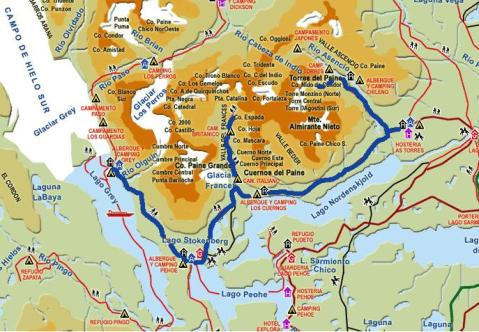
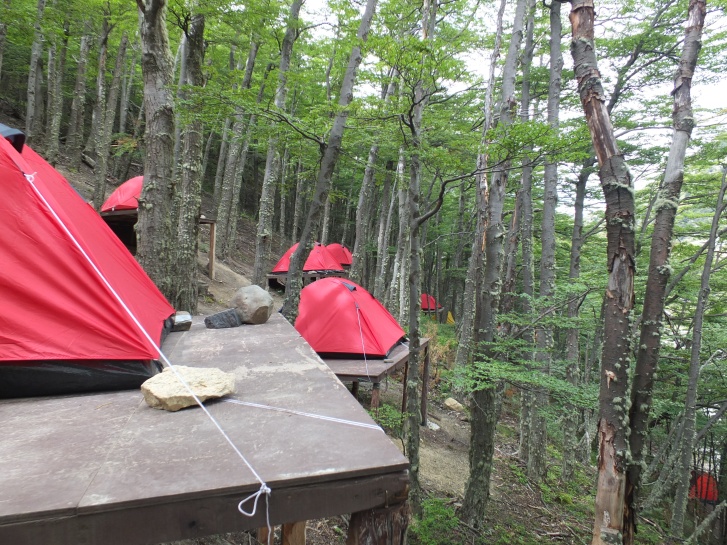
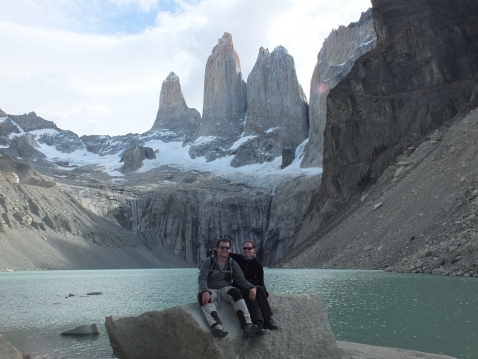
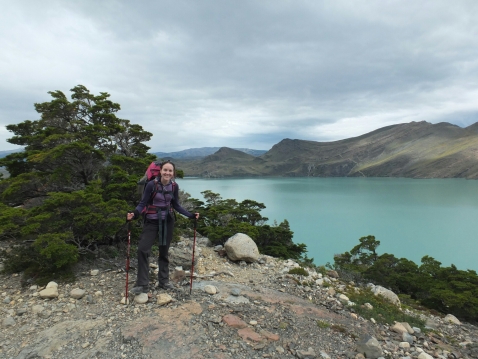
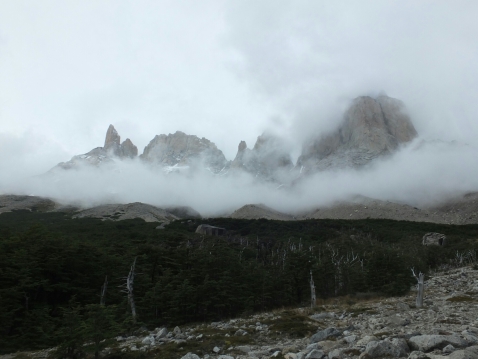
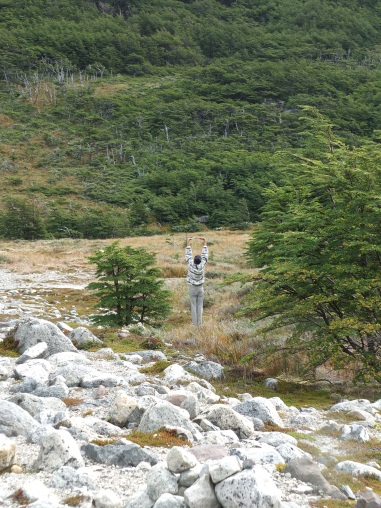
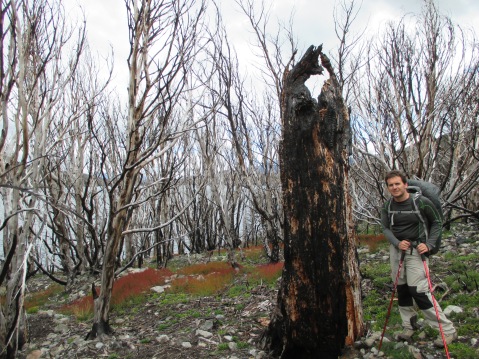
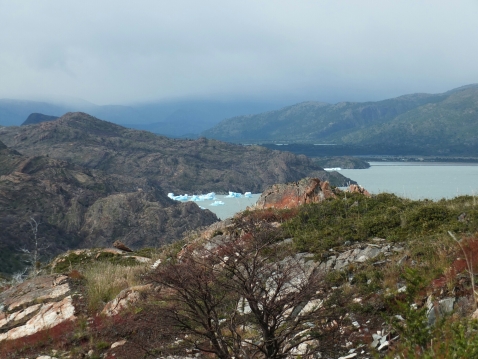
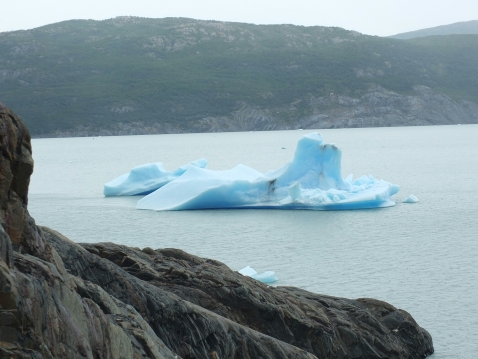
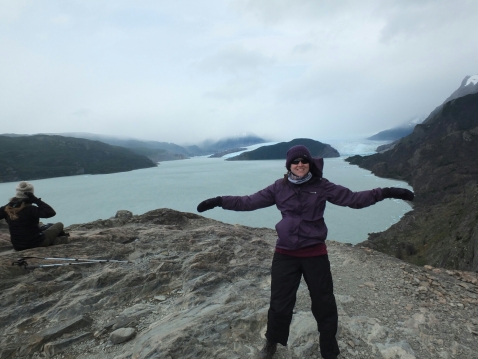
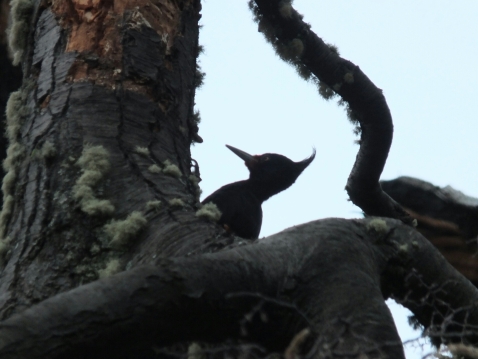
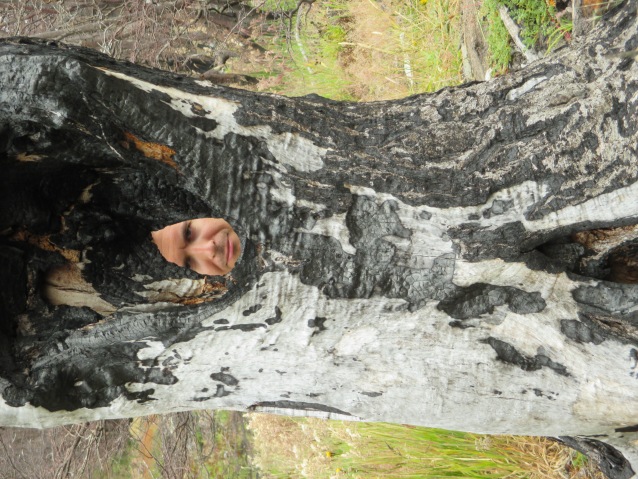
Excellent read. I feel like you’re right beside me Andy. At least the bit about you ranting in a dodgy Italian accent, in fact haven’t you tried that before?
Scenery looks pretty awesome. I also like your Ent. Hope you’re both well! Tim x
Thank you Tim, were both doing very well. Were back pretty soon (Exactly a month)… I need to buy you some celebratory drinks x